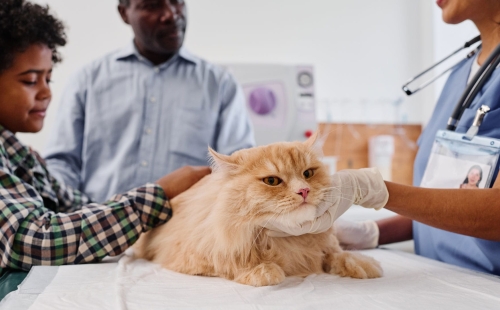9 Ways to Identify Revenue Leaks and Opportunities For Cost Savings In Your Veterinary Practice

In veterinary medicine, revenue leaks that harm your bottom line can sneak up on you. Many practice owners focus on improving services or attracting new clients, but you may be missing opportunities for cost savings, such as correcting everyday inefficiencies and oversights.
Here are nine ideas to help you identify and address missed revenue opportunities so you can strengthen your veterinary practice’s financial health while prioritizing patient care and the client experience.
1. Check for missed charges
Missed charges equal lost revenue, and minor errors or omissions from medical records can add up fast. The solution is to conduct random charge audits, in which a designated team member cross-references information in the SOAP notes with the invoice to see what gets commonly missed.
If you notice frequent omissions associated with specific situations or visit types, consider creating service bundles that automatically populate all standard charges. That way, team members can uncheck or delete anything they didn’t use, but won’t forget anything they did.
2. Optimize inventory
Inefficient inventory management can be a massive drain on profits. Overstocking leads to wasted medications, while understocking frustrates clients and team members and limits sales. In veterinary clinics, the cost of goods sold (COGS) directly impacts the books.
Set minimum and maximum stock levels in your practice management system and let your PIMS or third-party inventory software do the work. Ensure you regularly update wholesale product prices in the system to maintain accurate markup and COGS estimates, and explore opportunities for cost savings from suppliers.
3. Reduce no-shows
No-shows and late cancellations impact cash flow and disrupt an otherwise well-coordinated schedule. Veterinary revenue optimization relies on enough income to balance your fixed costs and ongoing expenses, and missed appointments can upset these calculations.
Use automated reminders and an integrated online booking system to reduce no-shows and forward-book follow-ups. Ideally, the system should also have a waitlist feature to help the team fill gaps after last-minute cancellations.
4. Engage clients
Clients are the lifeblood of any practice, and poor client communication leads to missed opportunities. If clients don’t understand the importance or value of a service, they’re less likely to agree to recommendations. These declined services contribute to revenue loss, but you can combat them with better communication.
Use your PIMS to send automated pre-visit instructions that include personalized educational content about the need for services to prime clients before visits, and take full advantage of email, two-way texting, and client portals to increase engagement and trust.
5. Automate everything
OK, not everything—but you should leverage automation features in your practice management software to ensure you’re operating at peak efficiency. Manual processes take time, and time is money.
Automate repetitive and time-consuming tasks wherever possible, including reminders, billing, follow-up check-ins, and digital forms. Use a modern, cloud-based PIMS to streamline workflows and create long-term cost savings on your biggest expense: labor.
6. Review pricing
Are your services priced appropriately based on the time, expertise, and overhead required to deliver them? Failing to charge what your services are worth can lead to revenue leakage, while setting prices too high drives clients away.
Compare your pricing to local or regional industry benchmarks to gauge your current alignment, and consult with an accountant or management professional to determine if price adjustments could enhance your overall profitability.
7. Streamline charting
Medical records are a constant challenge for the veterinary industry, slowing down workflows and tying up team members. When staff feel rushed, overwhelmed, or burned out because of charting, patient care can take a hit.
The right practice management system and efficiency tools, including AI scribes, can help staff complete records during—not after—patient visits. Templated, customized SOAP notes can also speed up the process.
8. Rethink retention
Retaining clients and developing long-term relationships is the key to overall practice profitability. Bringing in new pet owners costs more in marketing dollars than keeping the ones you have, who also provide (free) word-of-mouth referrals.
Get creative with your retention strategies. Put yourself in the pet owners’ shoes—what would make you feel like the clinic cares and goes above and beyond? Try sending personalized birthday greetings, hand-written notes for repeat clients, or bundled wellness services and loyalty perks.
9. Involve the team
Your team members are on the front lines. They know where things are working and where they aren’t, so you should actively seek their input on how to improve the practice and make their jobs more enjoyable in the process.
Secure team buy-in by involving them in the hospital’s financials and establishing group goals. Hold regular meetings to identify pain points and brainstorm cost savings ideas. Encourage a culture of accountability by tying success to shared outcomes.
Make cost savings a priority
Revenue leaks are easy to miss in a veterinary practice, but small changes can help you stop them. Focusing on efficiency and areas where a little cost savings can go a long way, such as inventory, is a great place to start. Routinely evaluating protocols and striving for constant improvement in client service and patient care can protect profitability for years to come.



